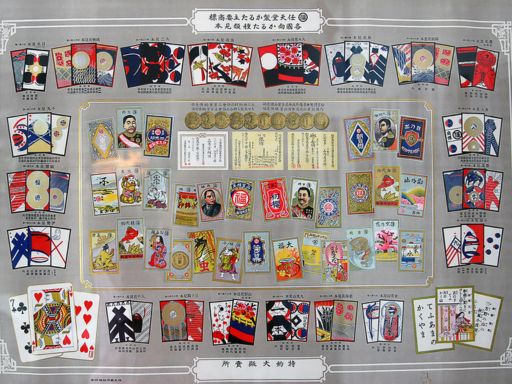The History of Nintendo

From its humble beginnings as a playing card company to its status as a global gaming juggernaut, the history of Nintendo is a testament to innovation, perseverance, and the ability to adapt to changing times. Founded in 1889, the company has evolved over the decades, leaving an indelible mark on the world of entertainment and gaming.

Origins as a Playing Card Company
Nintendo’s origins can be traced back to September 23, 1889, when Fusajiro Yamauchi founded the company as Nintendo Koppai in Kyoto, Japan. The company initially specialized in producing handmade Hanafuda playing cards, which were popular in traditional Japanese card games. The intricate craftsmanship and artistic design of these cards laid the foundation for Nintendo’s commitment to quality and creativity.
Diversification into New Ventures
As the 20th century progressed, Nintendo diversified its offerings. In the 1960s, the company explored various business ventures, including taxis, a love hotel chain, and even instant rice. However, it was the realm of electronic entertainment that ultimately captured Nintendo’s attention.
Entry into Video Games
As the 20th century progressed, Nintendo diversified its offerings. In the 1960s, the company explored various business ventures, including taxis, a love hotel chain, and even instant rice. However, it was the realm of electronic entertainment that ultimately captured Nintendo’s attention.
The Rise of Home Consoles and Iconic Characters
In 1983, Nintendo released the Family Computer (Famicom) in Japan, known as the Nintendo Entertainment System (NES) in other regions. This console marked a turning point in gaming history, rejuvenating the video game industry after the North American video game crash of 1983. The NES was accompanied by games like “Super Mario Bros.” and “The Legend of Zelda,” both of which introduced players to iconic characters and immersive gameplay experiences.
Innovations and Game-Changing Moments
Throughout the late 20th century, Nintendo continued to innovate and introduce groundbreaking concepts. The handheld gaming market was revolutionized with the release of the Game Boy in 1989, while the Super Nintendo Entertainment System (SNES) brought enhanced graphics and gameplay to home consoles. Nintendo’s introduction of motion controls with the Wii in 2006 marked yet another innovative leap, appealing to a wide range of players with its accessible gameplay.
Adapting to the Digital Age
As technology evolved, Nintendo navigated the challenges and opportunities of the digital age. The company embraced online gaming, digital distribution, and portable gaming with devices like the Nintendo DS and the more recent Nintendo Switch. These platforms allowed Nintendo to engage players in new ways, from downloadable content to interactive experiences that bridge the gap between traditional gaming and physical play.
Cultural Impact and Global Reach
Nintendo’s influence extends far beyond the gaming world. Its characters, including Mario, Link, and Pikachu, have become cultural icons recognized worldwide. The company’s dedication to family-friendly content, innovative gameplay, and memorable storytelling has made it a staple in households across generations.
Conclusion
The story of Nintendo is one of evolution, creativity, and an unyielding commitment to entertainment. From playing cards to pixelated adventures and beyond, the company’s journey exemplifies the power of adapting to changing times while staying true to core principles. As Nintendo continues to shape the future of gaming, its legacy as a pioneer and a global gaming powerhouse remains firmly entrenched in the annals of entertainment history.
Copyright © 2024 Little Book of Japan
